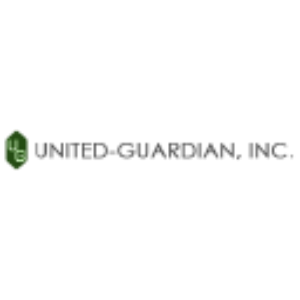Welcome to our dedicated page for United Guardian SEC filings (Ticker: UG), a comprehensive resource for investors and traders seeking official regulatory documents including 10-K annual reports, 10-Q quarterly earnings, 8-K material events, and insider trading forms.
United Guardian’s innovative water-based gels move seamlessly from top-shelf skincare to operating rooms, but the disclosures behind that versatility sprawl across hundreds of pages of SEC documents. Finding where R&D costs for new cosmetic ingredients meet FDA updates on medical lubricants can be daunting. If you have ever typed “United Guardian SEC filings explained simply” and come up short, this page is built for you.
Stock Titan’s AI reads every United Guardian filing the moment it hits EDGAR, slicing through jargon and surfacing what matters. Whether you need the latest United Guardian quarterly earnings report 10-Q filing or an United Guardian 8-K material events explained alert, our real-time dashboard delivers concise summaries, key metrics and plain-English context. Skip the PDF hunt and use our AI-powered highlights to answer questions like:
- Are there new United Guardian executive stock transactions Form 4 signalling management confidence?
- How did segment sales shift quarter-over-quarter—see our United Guardian earnings report filing analysis.
- What changed in supplier agreements—check the latest 8-K snippet.
Every filing type is covered: the United Guardian annual report 10-K simplified for business risks, United Guardian proxy statement executive compensation for pay structures, and United Guardian insider trading Form 4 transactions for governance insight. Need instant alerts? Our system streams United Guardian Form 4 insider transactions real-time so you can monitor buying and selling before market moves.
From understanding United Guardian SEC documents with AI to downloading the raw text for your own models, Stock Titan turns regulatory complexity into actionable clarity—saving analysts hours while ensuring nothing material slips by.
United-Guardian (UG) filed its Q3 2025 10-Q reporting lower sales and earnings. Net sales were $2,264,261, down from $3,060,113 a year ago, with nine‑month sales at $7,583,613 versus $9,705,262. Net income was $268,441 in the quarter (vs. $865,484) and $1,456,162 year‑to‑date (vs. $2,747,151). EPS was $0.06 for the quarter (vs. $0.19) and $0.32 year‑to‑date (vs. $0.60).
Mix and volume pressures weighed on margins: cost of sales rose to 58% of sales in Q3 (46% prior year) and to 50% for the nine months (47% prior year), reflecting a higher contribution from lower‑margin pharmaceuticals and lower cosmetic volumes. Cosmetic ingredient sales softened, particularly tied to China demand and tariff dynamics, while pharmaceuticals grew on both a gross and net basis.
Operating cash flow was $1,636,324 for the nine months. The company paid cash dividends of $0.35 per share in February and $0.25 per share in August. Management highlighted ongoing tariff uncertainty related to China and noted the Natrajel launch timing has shifted to 2026 due to customer timelines. Working capital remains strong with a 7.0:1 current ratio.
United-Guardian (UG) posted softer Q2 FY25 results amid tariff-related demand weakness in Asia. Net sales fell 16% YoY to $2.84 m, pulling H1 revenue down 20% to $5.32 m. Cosmetic ingredients—heavily exposed to China through key distributor ASI—dropped 37% in the quarter, while pharmaceuticals rose 3% and medical lubricants slid 12%.
Gross margin held near 53%, but a 15% rise in operating expenses cut operating profit 38% to $0.70 m. Net income declined 34% to $0.63 m (EPS $0.14); H1 earnings were 37% lower at $1.19 m (EPS $0.26).
Operating cash flow shrank to $0.63 m from $1.97 m. Cash, equivalents and marketable securities total $8.42 m, supporting a 6.7× current ratio and debt-free balance sheet. Retained earnings eased after a $0.35/share dividend paid in Feb; another $0.25/share dividend was declared 11 Jul 25 for payment on 1 Aug 25.
Management flags heightened risk from new U.S. tariffs effective Aug-25 and possible Chinese retaliation, given ~40% of ASI resale volume is China-bound. Customer (one distributor 75%+) and supplier concentration remain structural risks. The company expects its new Natrajel sexual-wellness line to begin contributing in H2 25, offering a prospective growth lever.


